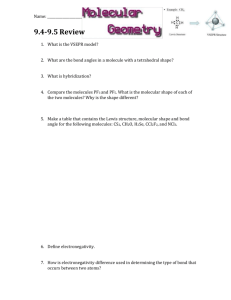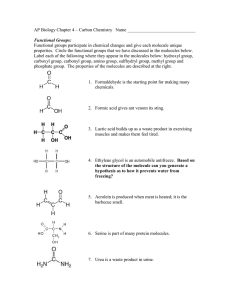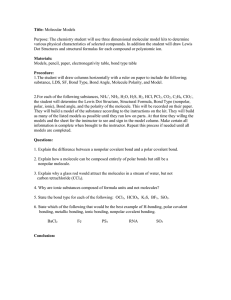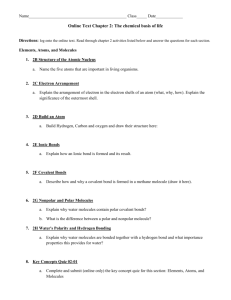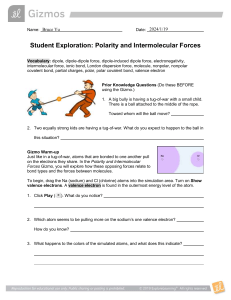Atoms, Chemical Bonds and Basic Biomolecules 1 STUDENT NAME:
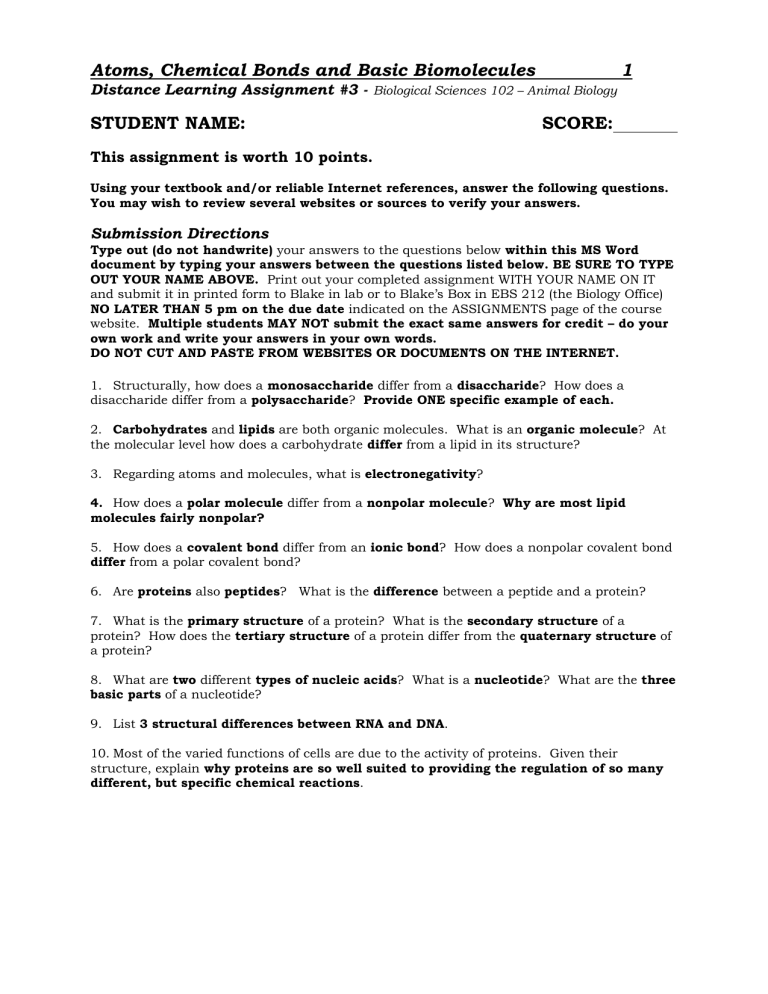
Atoms, Chemical Bonds and Basic Biomolecules 1
Distance Learning Assignment #3 -
Biological Sciences 102 – Animal Biology
STUDENT NAME:
This assignment is worth 10 points.
SCORE:
Using your textbook and/or reliable Internet references, answer the following questions.
You may wish to review several websites or sources to verify your answers.
Submission Directions
Type out (do not handwrite) your answers to the questions below within this MS Word
document by typing your answers between the questions listed below. BE SURE TO TYPE
OUT YOUR NAME ABOVE. Print out your completed assignment WITH YOUR NAME ON IT and submit it in printed form to Blake in lab or to Blake’s Box in EBS 212 (the Biology Office)
NO LATER THAN 5 pm on the due date indicated on the ASSIGNMENTS page of the course website. Multiple students MAY NOT submit the exact same answers for credit – do your own work and write your answers in your own words.
DO NOT CUT AND PASTE FROM WEBSITES OR DOCUMENTS ON THE INTERNET.
1.
Structurally, how does a monosaccharide differ from a disaccharide? How does a disaccharide differ from a polysaccharide? Provide ONE specific example of each.
2.
Carbohydrates and lipids are both organic molecules. What is an organic molecule? At the molecular level how does a carbohydrate differ from a lipid in its structure?
3.
Regarding atoms and molecules, what is electronegativity?
4.
How does a polar molecule differ from a nonpolar molecule? Why are most lipid molecules fairly nonpolar?
5.
How does a covalent bond differ from an ionic bond? How does a nonpolar covalent bond
differ from a polar covalent bond?
6.
Are proteins also peptides? What is the difference between a peptide and a protein?
7.
What is the primary structure of a protein? What is the secondary structure of a protein? How does the tertiary structure of a protein differ from the quaternary structure of a protein?
8.
What are two different types of nucleic acids? What is a nucleotide? What are the three
basic parts of a nucleotide?
9.
List 3 structural differences between RNA and DNA.
10.
Most of the varied functions of cells are due to the activity of proteins. Given their structure, explain why proteins are so well suited to providing the regulation of so many
different, but specific chemical reactions.
